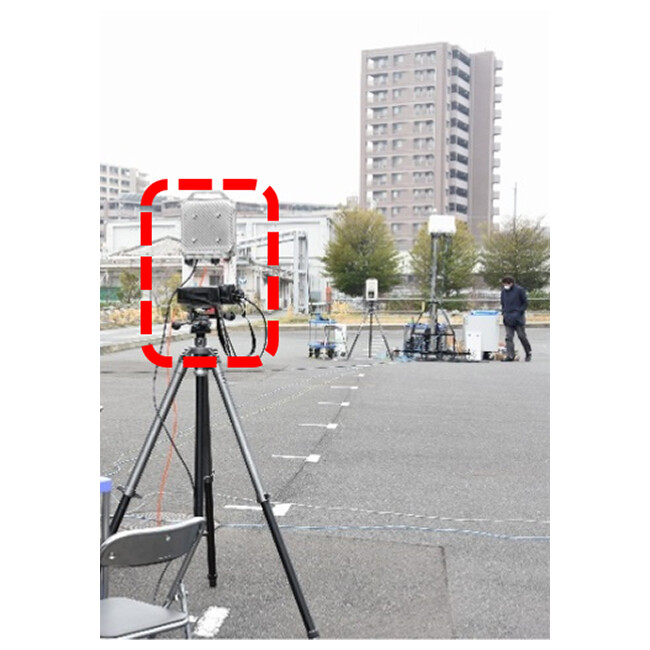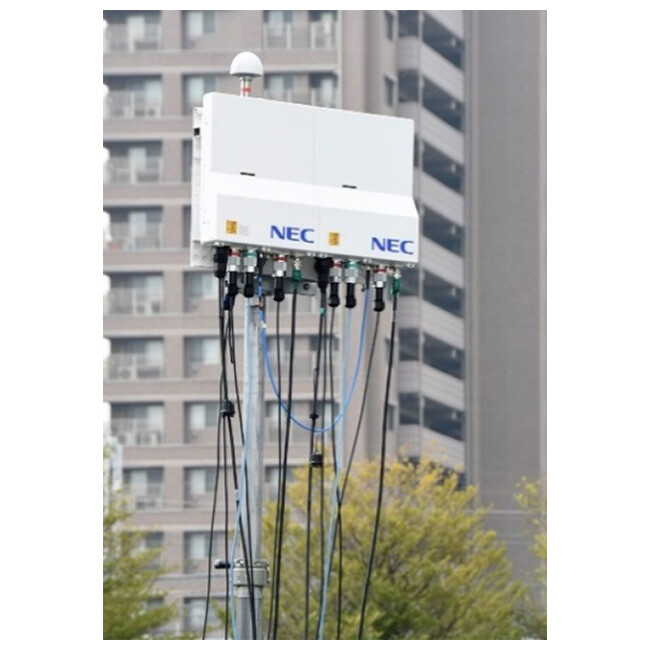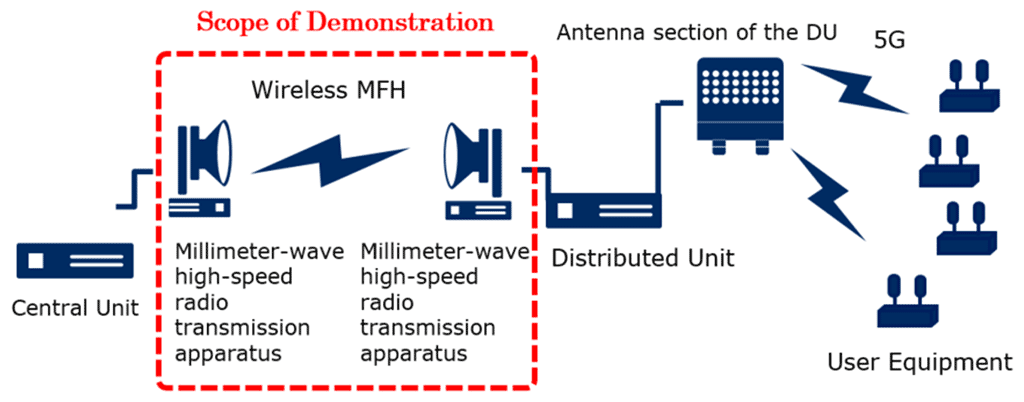Microsoft ends support for Internet Explorer on June 16, 2022.
We recommend using one of the browsers listed below.
- Microsoft Edge(Latest version)
- Mozilla Firefox(Latest version)
- Google Chrome(Latest version)
- Apple Safari(Latest version)
Please contact your browser provider for download and installation instructions.
July 30, 2019
Nippon Telegraph and Telephone Corporation
NEC Corporation
NTT and NEC conclude demonstration experiments of wireless-mobile fronthaul for 5G
- Achieving the same level of system throughput as optical fiber -
Nippon Telegraph and Telephone Corporation (NTT) and NEC Corporation(NEC) have concluded demonstration experiments of 5G wireless mobile fronthaul (MFH, *1) transmission in cooperation with NTT DoCoMo as part of “The research and development project for realization of the fifth-generation mobile communications system” commissioned by The Ministry of Internal Affairs and Communications, Japan.
In this study, an ultra-massive-element antenna base station system was used with a 4.5GHz-band C-RAN (*2) configuration, as well as a general-purpose millimeter-wave high-speed radio transmitter (*3) in order to achieve wireless MFH between an aggregate base station (Central Unit, hereafter CU) and a remote station (Distributed Unit, hereafter DU) in the system.
Tests of 5G transmission using this wireless MFH confirmed that the system throughput exceeded a downstream of 5Gbps (*4, *5), which is the same level as wired MFH optical fibres, and that the system throughput met the high-speed and high-capacity communication requirements required of 5G for the first time worldwide (*6).
Background and content of the demonstration experiment
-
 Wireless MFH unit
Wireless MFH unit -
 Remote station (DU) Antenna
Remote station (DU) Antenna
 System Configuration Overview
System Configuration Overview
Optical fibers are mainly used for communications between CUs and DUs of the C-RAN configuration introduced in current 4G (LTE) communications, and requirements such as transmission capacities are specified by the CPRI standard (*7).
In order to realize high-speed and large-capacity communications for 5G, Massive MIMO technology that transmits and receives data using wide bandwidth and many antenna elements is effective, but when the MFH conforms to the CPRI standards, the transmission capacity of the MFH is greatly increased when compared with conventional LTE.
For example, for DUs with 128 antenna elements (64 transceivers) and a 100MHz bandwidth, the CPRI standard requires about 320Gbps.
This corresponds to 60 times or more than that of LTE base stations (two antenna elements, 40 MHz bandwidth). In order to perform such MFH communications using 10Gbps optical fiber, which is currently common, it is necessary to install and multiplex a large number of optical fibres, a well as secure installation space and cover installation costs.
For 5G using high-frequency bands, it is effective to install a high density of DUs, but as the number of DUs increases, the number of optical fibers used as MFHs increases.
In order to address these issues, NTT and NEC have reduced the MFH to 10Gbps, which is a practical transmission capacity, and made MFH wireless.
Conventionally, when installing a high-speed millimeter-wave wireless transmission device capable of transmitting 10Gbps for wireless MFH on a building wall or a street light, it is necessary to reduce the size of the entire device, including the antenna.
In general, when the antenna is miniaturized, its directionality becomes wider. Therefore, unwanted signals, such as signals reflected from a building or signals from other wireless devices using the same frequency, are likely to be mixed in the signals transmitted and received in the wireless MFH section.
In addition, because DUs are densely installed, the effects of unwanted signals are further increased.
This demonstration experiment clarified the antenna installation conditions specific to the wireless MFH section so that quality degradation does not occur.
This study confirmed that by making the MFH for NEC’s C-RAN configured super multi-element antenna base station system for 5G wireless based on the antenna installation conditions for wireless MFH sections as outlined by NTT, the system achieved a downstream throughput of 5 Gbps or more, which is equivalent to that of fiber-based wired MFH, and the requirements for high-speed and high-capacity communications for successful 5G communications.
In the future, NTT and NEC aim to continue promoting further enhancements, including the reduction of transmission bandwidth in the optical and wireless MFH sections.
(*1)Wireless mobile fronthaul: A wireless transmission path between an aggregation base station (CU) and a plurality of remote stations (DUs)
(*2)Centralized-Radio Access Network: Base station configuration in which aggregated base stations (CUs) control a plurality of remote stations (DUs)
(*3)This study capitalized on iPASOLINK EX Advanced devices that achieve 10Gbps transmission of NECs.
https://www.nec.com/en/global/prod/nw/pasolink/products/ipasolinkEX_advanced.html
(*4)This experiment does not guarantee the performance of actual 5G services.
(*5)For a system bandwidth of 100 MHz
(*6)Based on NTT and NEC’s own survey
(*7)Common Public Radio Interface: A standard for base station interfaces.
NTT Press Contact (Japan):
Nippon Telegraph and Telephone Corporation
Information Network Laboratory Group
Public Relations, Planning Department
Email: inlg-pr-pb-ml@hco.ntt.co.jp
NEC Press Contact (Japan):
Joseph Jasper
NEC Corporation
Email: j-jasper@ax.jp.nec.com
Information is current as of the date of issue of the individual press release.
Please be advised that information may be outdated after that point.
NTT STORY
WEB media that thinks about the future with NTT










